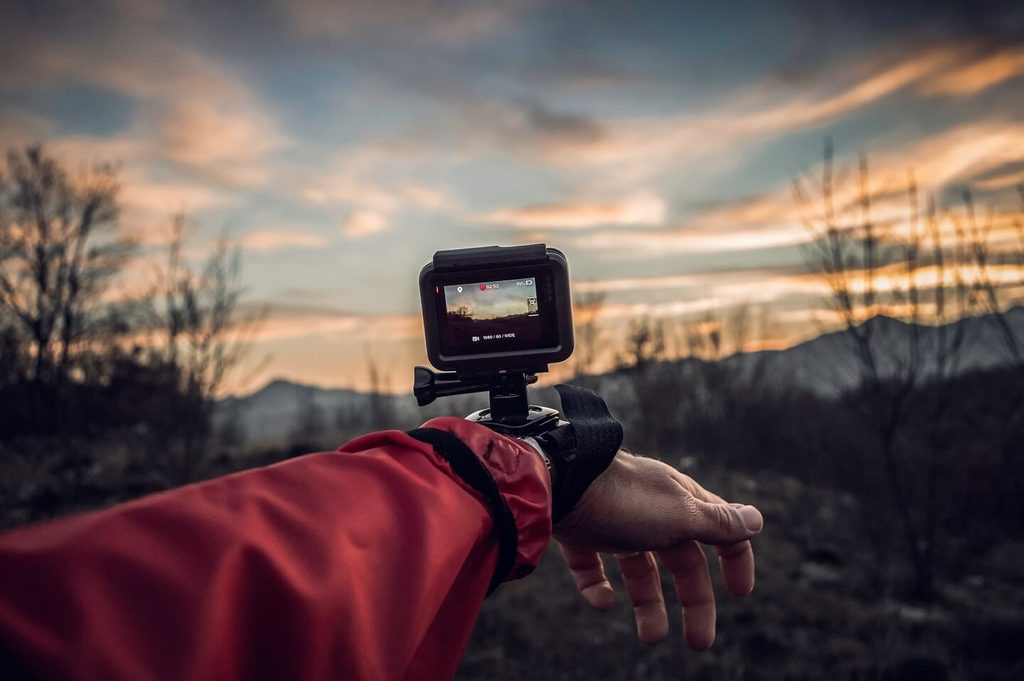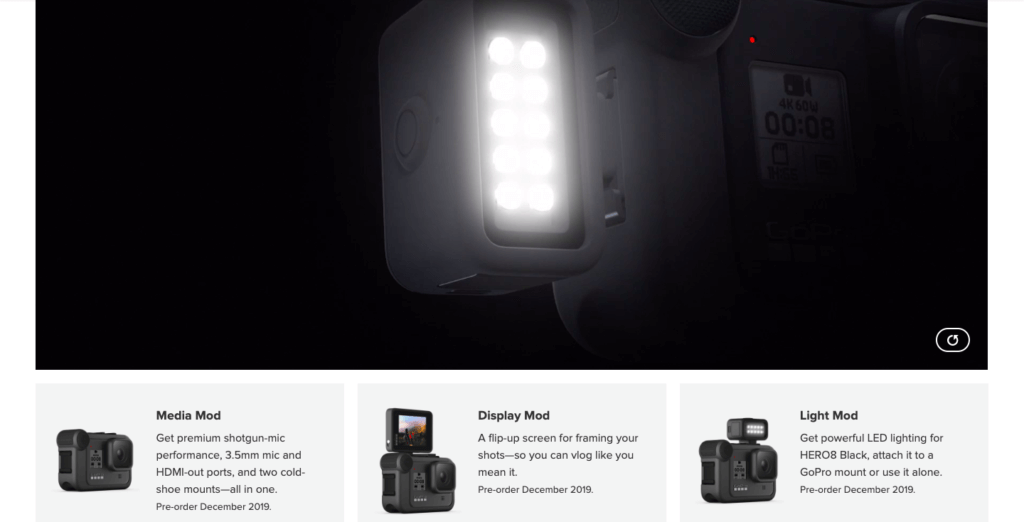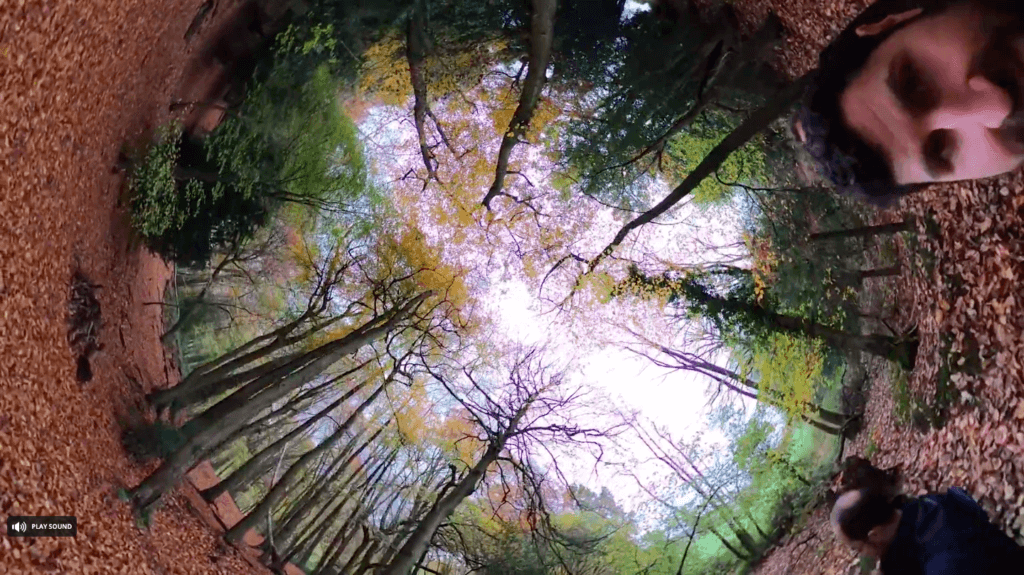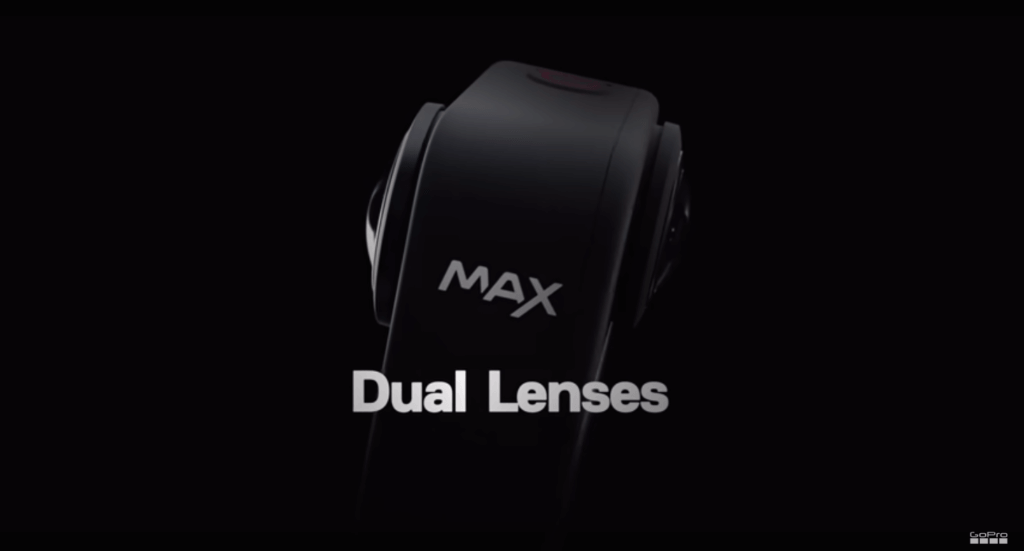GoPro has reached a level of ubiquity that most companies can only dream of: having an entire genre of products named after itself. Like Coke, Xerox, Kleenex and Google in their niches, they’ve so thoroughly dominated the action camera space that most simply call an action camera a “GoPro.”
Their latest high-end camera offerings are just as good as their older counterparts, and the price point is lowering. The GoPro Hero 8 and the GoPro MAX 360 are incredible action cameras, but what makes the difference between the two?
We’re going to look into these two cameras and show the history that led up to the current models, the technology that goes into them, and the differences between the two. If you’re looking for an action camera, we’ll also have a recommendation at the end to show you what camera is going to be best for your individual needs …
Let’s dive in!
The GoPro Hero 8
GoPro’s original HD Hero was a revolution in filming, a simple camera that allowed anyone to film action in a convenient and easy-to-use package. The Hero 8 is the descendant of that original, seminal design.
In the interim years some of these cameras were seen as not quite up to the GoPro standard, but the Hero 7 was widely acclaimed as a return to form, and the Hero 8 is an evolutionary development of what some consider the best GoPro in some time.
At the moment, the improvements are evolutionary, but the thing that makes the difference with the GoPro Hero 8 is its accessories, or “Mods,” that are designed specifically for the camera. These accessories are aimed at vloggers who have been using kludgy hacked-together setups for years to get the best possible lighting and sound.
With lights and microphones made specifically for the Hero 8 they can get an all-in-one solution without having to buy from several different aftermarket vendors and put together their own setup. It’s a turnkey solution.
GoPro hasn’t capitalized on the accessory market as much in the past, preferring to focus on its bread and butter action cams — that may be changing with the Hero 8 …
While the camera on its own is still the same old action camera it’s always been with some new and helpful features, the addition of the accessories makes it clear they’re focusing on new markets that aren’t doing things that are using the camera in a more stationary setting.
The more evolutionary improvements are solid, too.
GoPro’s HyperSmooth stabilization now applies across all video shooting modes instead of just some of them and works with TimeWarp, the interval photography mode. The Capture Presets feature allows users to flip between customized setting templates in the field instead of setting everything manually. There’s also a new “Narrow” lens setting for close-ups.
There are a few iterative physical improvements, too. Doubled shock resistance, longer battery life and a built-in mount all differentiate the Hero 8 from its forebears.
The Hero 8 is definitely more of an evolutionary improvement than a revolutionary one, but the improvements are solid and the underlying platform is excellent. It’s a great high-end traditional action camera and looks like a solid option for vloggers who do some action filming too.
But what about the GoPro MAX?
The GoPro MAX
360-degree cameras have been relatively slow to make it to the mainstream, but companies are starting to hop on the wave. The MAX is the latest to enter this space.
A 360-degree camera is designed to take footage in all directions around itself, and that footage can either be kept in its slightly bubble-looking original form (like looking through a bug’s eyes) or edited into a more normal flat video.
The MAX is GoPro’s second take on a 360 camera after the Fusion, which debuted at a higher price point and was marketed at professionals and prosumers. The MAX is more tailored to the mainstream. GoPro’s intention is to bring this 360-degree video to regular people who film but don’t have the background in video editing or the experience to mess with all the settings.
In a lot of ways the GoPro MAX is the logical evolution of their design ethos. The company has always been about making it easier to film action, and the design of a 360-degree camera is far better for that than a regular camera.
That’s because the multiple angles and extra footage allow for far better horizon stabilization and panoramic views than a traditional lens. Riding a mountain bike down a rough section of trail or fighting choppy surf in a boat will look far smoother than they would with many other cameras.
The MAX also includes a lot of the features that make the Hero 8 a good camera, including the built-in mount. It’s not quite as durable, though, and that’s due to the fact that it’s a 360-degree design instead of a flat camera. The bubble dome used for filming doesn’t quite hold up to the same stresses as the traditional design, though it’s still tough.
GoPro’s software leaves a little to be desired, too.
To really extract the full potential from this camera you need the right software and editing, whether you’re looking for 360-degree video or regular flat video. GoPro’s software design suite is optimized for Apple, with Android and Windows getting short shrift on some of the features that make life easier for video enthusiasts.
Darker scenes stress the stabilization more than lighter scenes. Like any camera, the MAX is only as good as its lighting. But it’s good in most settings.
It’s a worthy entry in the space, and though it’s much newer technology than the Hero 8 it doesn’t seem to suffer from the sort of jitters some early editions of now-ubiquitous gadgets did.
A Head-to-Head Comparison: GoPro Hero 8 Black versus GoPro Max
GoPro’s marketing in a lot of ways seems to be pushing the MAX as the next evolution of their cameras and a higher-end model than the Hero 8. It’s definitely more versatile than the Hero 8, as the 360-degree setup makes it able to capture video with better stabilization and VR compatibility as well as the regular capabilities of the Hero 8.
But there are a few important things that differentiate the two …
First is the durability. Though the MAX is very durable, its lenses are a weak point. That’s not the fault of GoPro, but by design the bubble just isn’t as tough as the flat Gorilla Glass lens of the Hero 8. There are guards that can be added when you’re filming in rougher conditions but they cut off some of the video as an unavoidable consequence and still don’t provide full protection.
This isn’t a deal-breaker for many people. Still, it’s worth noting, especially for those who spend a lot of time filming in very rough environments. If you’re worried about breaking the exposed lenses you might want to stick to something that has less chance of being affected by a rocky tumble.
Next is the image quality. The MAX is very good across the board with its image quality but the Hero 8 still supports higher resolution and the colors are slightly better. That’s one of the tradeoffs of the MAX design. Sensor size has a lot to do with detail, and the Hero 8 focusing on doing one thing well allows it to mount a little bit bigger sensor.
If image quality is the be all and end all, the Hero 8 is still the way to go.
Finally, versatility is the last major difference between the two. The MAX is just a more versatile platform across the board. With multidirectional sound recording, 360-degree video, regular video capabilities, photo capabilities, interval photography and an on-the-go editing app that lets you work with 360-degree video, it’s the camera to get if you want maximum options.
The Final Verdict
There are very minor feature differences between the two, and the price point is about $100 different, but for as close as they are the MAX is the clear winner for most applications. It’s just more versatile, and the future-proof nature of the 360-degree camera means you’re probably set for at least a little while.
The Hero 8 is still king if you’re working in very rough environments, need a smaller footprint or want the very highest image quality available. It’s an extremely capable action camera. But for those who don’t need the most rugged miniature option or the very top-of-the-line quality the MAX is the better camera.
For roughly $100 extra MSRP, GoPro aficionados can get an action camera that does everything both in the field and on the desk. The future is here now. Though either camera is a fantastic high-end option, it’s a good bet that many action camera consumers will begin migrating to 360-degree video given the minor price difference between the two. If you’re having issues figuring out which is best for your needs, don’t fret. You can reach out to HelpCloud Technicians for remote support to help with any of your technology questions or problems — call us today!



